What's New
Displaying results 3341 - 3350 of 4052

Resource | Reviews and Snapshots,
Although the prevalence of HIV in the general population is low (0.2%) and is mainly concentrated among injecting drug users (IDUs) in Jakarta, West Java and Bali, the epidemic has now spread to other key populations at higher risk such as non‐injecting partners of IDUs, sex workers and their clients.
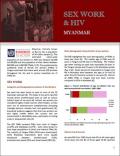
Resource | Reviews and Snapshots,
Myanmar, formerly known as Burma, has a population of 50 million people. The estimated nation‐wide population of sex workers in 2007 was between 40,000 and 80,000 and the population of their clients between 840,000 and 1,400,000 (Table 1). One predominantly qualitative study of female sex workers (FSWs) in Yangon estimated that there were around 100 brothels throughout the city and in various townships (as of 2003).
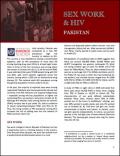
Resource | Reviews and Snapshots,
Until recently, Pakistan was considered as a ‘low HIV prevalence, high risk country’ in relation to HIV. The country is now classified as having a concentrated epidemic, with an HIV prevalence of more than 5% among injecting drug users (IDUs) in at least eight major cities in three of the four provinces and among Hijras sex workers in at least one city. At the end of 2009, it was estimated that were 97,400 people living with HIV and AIDS, with 2,917 patients registered across the country, among whom 1,320 are on antiretroviral drug therapy. The national adult HIV prevalence among the general population remains under 0.1%.
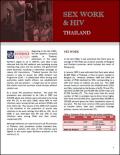
Resource | Reviews and Snapshots,
Beginning in the late 1980s, the HIV epidemic increased rapidly in Thailand, particularly in the upper Northern region. In 1990‐91, soon after it was observed that the HIV epidemic was spreading among injecting drug users and sex workers, the government acted decisively, launching a nationwide campaign to reduce HIV transmission. Thailand became the first country in Asia to launch the 100% Condom Use Programme (CUP) – a collaborative effort among local authorities, public health officers, sex establishment owners, and sex workers – a target was set to ensure that clients could not purchase sexual services without condom use.
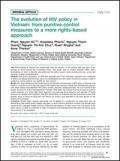
Resource | Publications,
Policymaking in Vietnam has traditionally been the preserve of the political elite, not open to the scrutiny of those outside the Communist Party. This paper aims to analyse Vietnam’s HIV policy development in order to describe and understand the policy content, policy-making processes, actors and obstacles to policy implementation.
Nine policy documents on HIV were analysed and 17 key informant interviews were conducted in Hanoi and Quang Ninh Province, based on a predesigned interview guide. Framework analysis, a type of qualitative content analysis, was applied for data analysis.
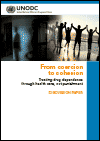
Resource | Publications,
In responding to the problem of drug use, many countries have introduced severe penalties for drug use and related crime, which have resulted in large numbers of people in prisons, compulsory treatment centres, or labour camps without significant long term impact on drug use, drug dependence or drug-related crime in the community and are in contradiction with human rights. At the same time, the long term incarceration of a large number of people who use drugs is expensive. It also results in high risk for the transmission of HIV, hepatitis, and TB, both in closed settings and beyond, that represents a significant public health risk to the community.

Resource | Guidelines,
These Guidelines for Addressing HIV in Humanitarian Settings aim to assist humanitarian and AIDS organizations to plan the delivery of a minimum set of HIV prevention, treatment, care and support services to people affected by humanitarian crises.
These guidelines concentrate on the integration of HIV into the humanitarian response to crises, with a particular focus on two phases: the minimum initial response, which outlines a set of HIV-related interventions to be carried out during the early stages of any emergency regardless of the specific local or epidemiological context of the epidemic; and the expanded response, during which additional core HIV interventions should be planned and implemented as soon as possible, taking into account the local contexts and priorities, the epidemiological profiles and the capacity of different sectors to deliver the interventions.
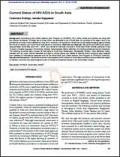
Resource | Publications,
According to the United Nations Joint Program on HIV/AIDS, 33.2 million adults and children are living with the infection worldwide. Of these, two or three million are estimated to be in South Asia. All countries of the region have a low prevalence of human immunodeficiency virus (HIV). However, it is important to review the current epidemiological data to identify the trends of infection as it would have implications on prevention.
This review looks into many aspects of HIV infection in South Asia including country profiles with regard to infection, economic and psychological burden of illness and treatment issues in the South Asian context.
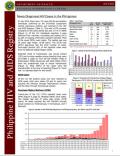
Resource | Fact Sheets,
In July 2010, there were 131 new HIV Ab seropositive individuals confirmed by the STD/AIDS Cooperative Central Laboratory (SACCL) and reported to the HIV and AIDS Registry (Table 1). This was an 87% increase compared to the same period last year (n=70 in 2009) [Figure 1]. Of the 131 individuals reported, six were detected from voluntary counseling and testing (VCT) as part of ongoing community outreach activities. Most of the cases (90%) were males.
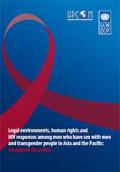
Legal Environments, Human Rights and HIV Responses among MSM and Transgender in Asia and the Pacific
Resource | Publications,
A study was conducted of legal environments affecting HIV responses among men who have sex with men (MSM) and transgender people in 48 countries and territories of the Asia and Pacific region. The study was conducted from August 2009-June 2010, and considered legislation, cases, and published research and grey literature regarding laws, and law enforcement policies and practices. The study was informed by consultations with community representatives, legal experts and UN agencies.
The study was undertaken to fill gaps in knowledge about (i) the effects of laws and law enforcement policies and practices on HIV responses among MSM and transgender people, and (ii) the role of civil society organizations, governments, donors, UN agencies and other multilateral agencies in supporting improvements to legal environments affecting MSM and transgender people. The study highlights examples of good practice.





